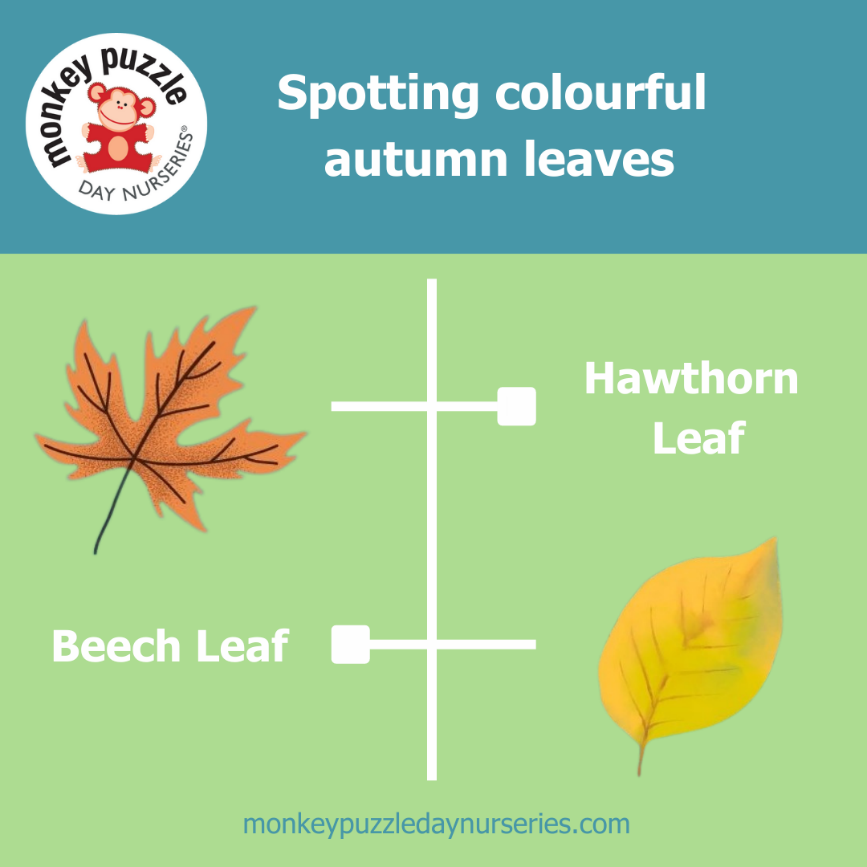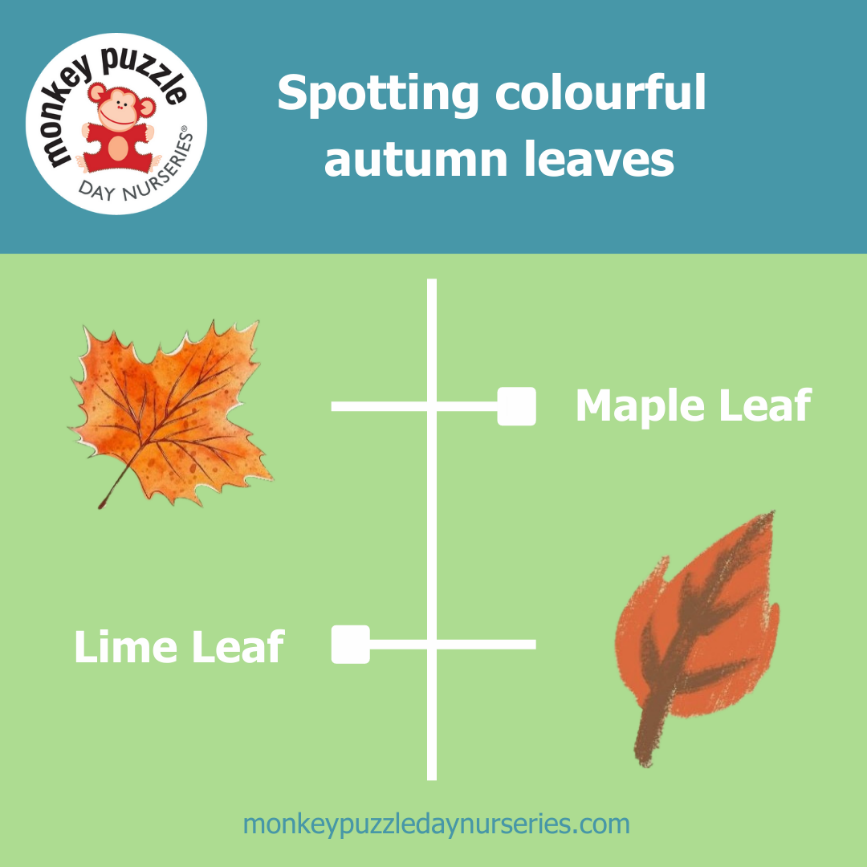As the weather gets cooler and Autumn approaches, children will take delight in seeing the changing colours and falling leaves.
In the UK, we’re lucky to be blessed with spectacular autumnal shows, with mid-to-late-October the best time to catch them. While leaves can start falling from the trees as early as mid-September in Scotland.
Spotting the most colourful leaves
We all know that only deciduous trees lose their leaves, unlike evergreens. But did you know that the leaves of different deciduous trees turn different colours?
The main colours of autumn are orange, yellow and brown, with some trees turning red, purple or a combination of colours. Here are some of the most vibrant leaves you and your child can spot during autumn.
Getting creative with autumn leaves
It’s only natural that children will want to get hands-on when they find particularly special leaves. So here are some ideas for fun leaf activities.
Autumn leaf collage
To create a colourful leaf collage, you just need a piece of card, some PVA glue and, of course, some leaves. Simply ask your child to pick their favourite leaves and stick them to the card, finishing with some glitter glue, if you like.
You might also want to invite them to cut some card or leaves with scissors, since this will help to develop their fine motor skills.
Leaf rubbing
A great tactile activity, leaf rubbing lets kids explore the details of the leaves they’ve found on autumn walks.
You simply place leaves on a flat surface, under a piece of paper. Then ask your child to rub the side of a crayon over the paper, revealing features of the leaf underneath. If you use a variety of leaves, you can ask children to identify the differences and similarities between them.
It’s a good idea to find fresher leaves, since older, dried-out ones might crack.
Leaf printing
Most children love painting, so they’ll jump at the chance to create some autumnal art.
Ask your child to paint a thin layer of paint onto the leaves, then press them paint-side down onto the paper. Freshly fallen leaves work best, since you can easily peel them off once they’ve left their imprint.
Once they’ve got the hang of it, encourage your child to mix colours to produce different autumn shades. The trial and error mixing process will teach them about solving problems.
Autumn leaf wreath
Kids will get a kick out of making something that you hang on the wall or front door.
Making it can be as simple as taking a paper plate and cutting the middle out, then glueing various leaves to the edge of the plate. Make sure they overlap to get the best effect, then attach some Blu Tack and give the wreath pride of place in your home.
How can early years children benefit from exploring nature?
Being outdoors and close to nature boosts everyone’s physical and mental health, but it’s particularly important for young children:
- Nature is ever-changing and provides stimulation for all the senses
- Children have more space and freedom to express themselves outside
- Experiencing new things will encourage an inquisitive mind
- Outdoor play is more physically active
How Monkey Puzzle teaches through nature
All of our nurseries have gardens, where children explore nature and find stimulation for the senses. We understand that outdoor play develops gross motor skills and allows children to think on a larger scale.
We also place great importance on educating children on how to care for our environment. Whether it’s discussing the importance of trees or providing sustainable activity ideas for home, Monkey Puzzle Day Nurseries make sure our young learners have plenty of exposure to nature.
For information on exploring Autumn, we have another great article about exploring Autumn in the city.


